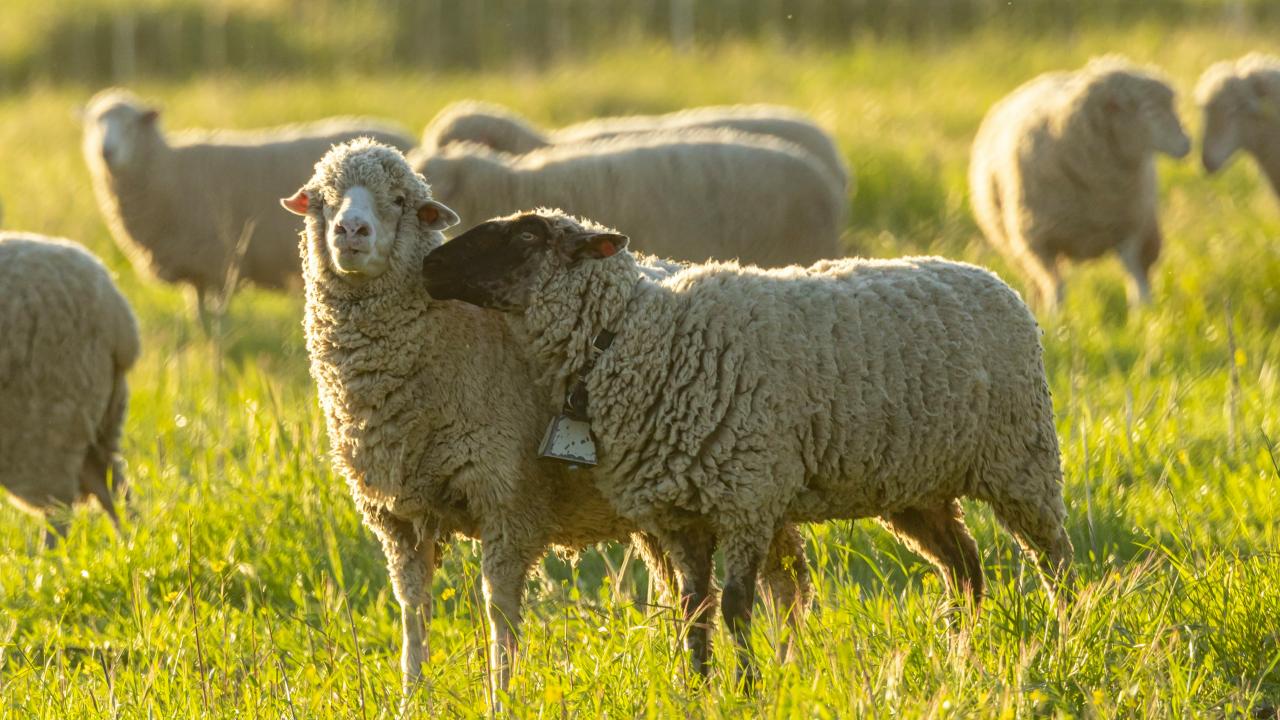Wool report - market gets spring in its step

It was another positive week for the Australian Wool market which makes it three on the trot now, and while people in all sectors of the trade would like it to be the start of a resurgence or boom, it is historically the wrong time of the year for the market to go for a sustained run.
But there has been a discernible spring in the step of many knitwear buyers this week for the Chinese domestic market.
What has brought about the change in sentiment nobody is able to say and not everybody is seeing it.
The overall economic picture in China has not fundamentally changed, but some have said that it just feels different this week.
Whether this positive tone will continue remains to be seen, but it has definitely been welcomed by those who have been able to trade off the back of it, and maybe it was just due to a visiting dignitary from Australia spruiking our wares to his Chinese hosts.
Perhaps the visit could be extended for another few weeks or months. August to October is generally a time of reflection and consolidation for the wool market.
Mills have produced the basic products, retailers are waiting to see what consumers think and how the appetite is before ordering further stocks.
Consumers are coming back from summer holidays and take a while to switch on to winter clothing requirements.
The greasy wool supplies used to also peak in this three-month period, so the market was awash with supply, and demand is usually more tepid than at other times of the season.
Different cycles can be different of course, and we have seen the market constrained for a long period of time by mostly external forces, so old habits or patterns can be broken.
Back in 2017, the 21-micron MPG rose by more than a dollar during August, only to give it all back in September, but then it built from there in December and then basically went on a two-year price upturn before running out of steam and falling again.
There will be plenty of people cheering from the bleachers if a similar scenario was to play out from August this year but cautious sentiment deems it still unlikely.
By the numbers last week the East Coast-only wool auction was 9 cents dearer in local currency terms, 7 US cents dearer and 10 Euro cents dearer as well.
The total number of bales that changed hands was a touch over 22,000 so filling machinery orders by itself was ample activity to keep prices firm.
Given that the average combing mill in China requires around 2000 bales per week, and the largest two mills need 3000 bales per week, the top 10 mills can easily chew through this small offering of 22,000 bales even if some mills are running at a little less than full capacity at present.
Nearly every category of wool was dearer, with only the really low yielding lots or those containing other serious processing faults dragging down the average indicators in the small Sydney catalogues.
Superfine and fine merino wools continued to rally and although they were still comparatively cheap at least the trend was finally moving in the right direction.
Medium merino was still the processors ‘bread and butter’ and prices are building to a point where growers are feeling comfortable again.
Current prices for 21-micron are two dollars higher than they were in both August 23 and August 24.
Given the uncertainty still being generated by Washington DC and the instability in a couple of other trouble spots selling futures to cover impending shearing would be a no-brainer for at least part of the clip.
Eight out of 10 people in the Chinese domestic trade are yet to be convinced there is any recovery, so it is a little early to sit back and expect prices to rise from here, especially for the next three months.
Conversely those further along the pipeline have a meagre volume of orders sold into the fourth quarter, so they want cover and rather than buy and hold physical wool now until October it makes sense for them to be buying futures contracts.
Crossbred wool resumed its march upwards again and although on the longer-term decile charts it is still lagging the medium merino sector, which is up around their 85th percentile, the 28-micron is currently sitting at the 50th percentile since 1991, which is the beginning of the ‘free-market post stockpile’ trading period.
There is still plenty of blue sky in the next 50 per cent, but these coarser wools are also ticking the box.
Another box which has been recently ticked is that of the Product Environmental Footprint Category Rules for Apparel and Footwear – or PEF as it has been colloquially known.
The European Commission has agreed with common sense and plenty of natural fibre lobbyists that a whole-of-life methodology is much more appropriate than just a single customer-facing environmental scoring system as was being promulgated by the evil synthetic producers.
Hopefully, within this calendar year we should also be able to wit ness some further encouraging price movements too.




Add new comment